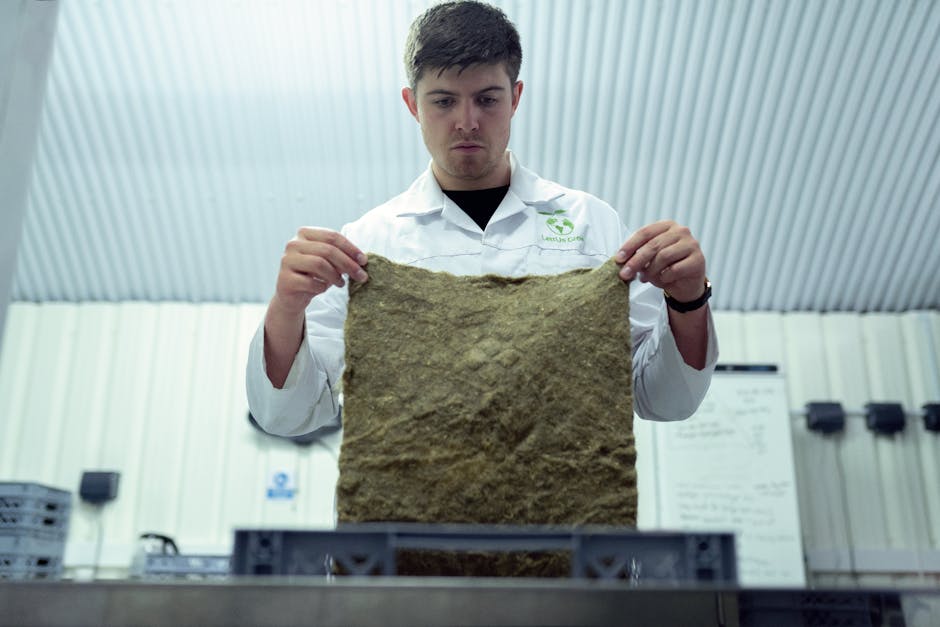Exploring Key Trends in Environmental Science
Welcome to the fascinating world of environmental science, where the study of our planet’s intricate ecosystems, climate patterns, and natural resources takes center stage. In recent years, the field of environmental science has witnessed significant advancements, driven by a growing awareness of the urgent need to address environmental challenges such as climate change, biodiversity loss, and pollution. From cutting-edge technologies to innovative conservation strategies, key trends in environmental science are shaping the way we understand and protect our planet. In this comprehensive guide, we will delve into the key trends that are revolutionizing the field of environmental science and paving the way for a more sustainable future.
The Rise of Green Technologies

One of the most prominent trends in environmental science is the rapid development and adoption of green technologies. These innovative solutions harness the power of renewable energy sources such as solar, wind, and hydropower to reduce our reliance on fossil fuels and lower carbon emissions. Solar panels, for example, have become increasingly affordable and efficient, making solar energy a viable alternative to traditional sources of electricity. Wind turbines are also being deployed on a large scale, generating clean energy while minimizing environmental impact.
Additionally, advances in battery technology are enabling the storage of renewable energy for later use, addressing the intermittent nature of sources like solar and wind power. Electric vehicles (EVs) are another key innovation in the green technology sector, offering a sustainable alternative to traditional combustion engine vehicles. The widespread adoption of EVs has the potential to significantly reduce greenhouse gas emissions from the transportation sector, contributing to global efforts to combat climate change.
Conservation 4.0: Technology in Wildlife Protection

Technology is playing an increasingly important role in wildlife conservation efforts, giving rise to the concept of Conservation 4.0. Conservationists are using cutting-edge tools such as drones, satellite imagery, and GPS tracking to monitor and protect endangered species and their habitats. Drones equipped with cameras are used to survey vast areas of land, providing valuable data on wildlife populations and illegal activities such as poaching and deforestation.
Satellite imagery allows researchers to track changes in land use over time, identifying areas of deforestation or habitat loss. GPS tracking devices are used to monitor the movements of individual animals, helping researchers understand their behavior and migration patterns. By harnessing the power of technology, conservationists are able to make more informed decisions and implement targeted conservation strategies to safeguard biodiversity.
The Circular Economy: Reducing Waste and Promoting Sustainability

The concept of the circular economy is gaining traction as a key trend in environmental science, focusing on reducing waste and maximizing the use of resources. Unlike the traditional linear economy, which follows a ‘take-make-dispose’ model, the circular economy aims to keep resources in use for as long as possible through recycling, reusing, and repurposing. This shift towards a more sustainable approach is driven by the recognition that our current consumption patterns are not environmentally sustainable in the long term.
Companies and industries are increasingly adopting circular economy principles, designing products that are durable, repairable, and recyclable. By closing the loop on material flows and reducing reliance on finite resources, the circular economy offers a pathway towards a more sustainable and regenerative economic system. From clothing and electronics to food and packaging, the circular economy is reshaping the way we produce, consume, and dispose of goods.
Climate Resilience and Adaptation Strategies

As the impacts of climate change become more pronounced, there is a growing focus on climate resilience and adaptation strategies to mitigate the risks associated with extreme weather events and rising temperatures. Climate resilience refers to the ability of ecosystems, communities, and infrastructure to withstand and recover from the impacts of climate change, while adaptation involves adjusting to changing climatic conditions to reduce vulnerability.
Communities around the world are implementing various adaptation measures such as building sea walls to protect against rising sea levels, implementing drought-resistant farming practices, and restoring mangrove forests to buffer against storm surges. Climate-resilient infrastructure, such as green roofs and permeable pavement, is also becoming more common to mitigate the effects of urban heat islands and heavy rainfall. By incorporating climate resilience and adaptation into planning and decision-making processes, societies can better prepare for the challenges posed by a changing climate.
The Role of Citizen Science in Environmental Research
Citizen science has emerged as a powerful tool for engaging the public in environmental research and monitoring efforts. Citizen scientists, who may be volunteers, students, or community members, contribute valuable data and observations that help researchers track environmental changes and inform conservation initiatives. Projects such as eBird, iNaturalist, and Earthwatch enable individuals to participate in scientific research by documenting wildlife sightings, monitoring water quality, and collecting data on climate patterns.
By involving citizens in scientific endeavors, researchers can gather large amounts of data across diverse geographic areas, providing insights that would not be possible through traditional research methods alone. Citizen science also promotes environmental awareness and fosters a sense of stewardship among participants, empowering individuals to take action to protect the environment. Through collaborative efforts between scientists and the public, citizen science is revolutionizing the field of environmental research and monitoring.
Urban Green Spaces: Promoting Biodiversity in Cities
Urban green spaces, such as parks, gardens, and green roofs, play a crucial role in promoting biodiversity and enhancing the quality of life in cities. As urbanization continues to expand, preserving and creating green spaces within urban areas is essential for supporting wildlife, improving air quality, and providing recreational opportunities for residents. Green infrastructure, such as urban forests and wetlands, helps mitigate the heat island effect, reduce air pollution, and support pollinators like bees and butterflies.
Cities around the world are implementing green infrastructure projects to enhance urban biodiversity and create more sustainable, resilient communities. From vertical gardens on skyscrapers to community gardens in vacant lots, urban green spaces are transforming the built environment into vibrant, ecologically diverse landscapes. By integrating nature into urban design and planning, cities can foster a closer connection between residents and the natural world, promoting environmental stewardship and biodiversity conservation.
Conclusion: Towards a Sustainable Future
As we have explored the key trends in environmental science, it is evident that the field is undergoing rapid transformation in response to pressing environmental challenges. From green technologies and conservation strategies to climate resilience and citizen science, these trends are reshaping our understanding of the natural world and guiding us towards a more sustainable future. By embracing innovation, collaboration, and a commitment to sustainability, we can work together to protect our planet and ensure a healthy environment for future generations.
Let us continue to explore, innovate, and advocate for a greener, more sustainable world. Together, we can make a difference and create a future where environmental science plays a central role in shaping a healthier, more resilient planet for all.




